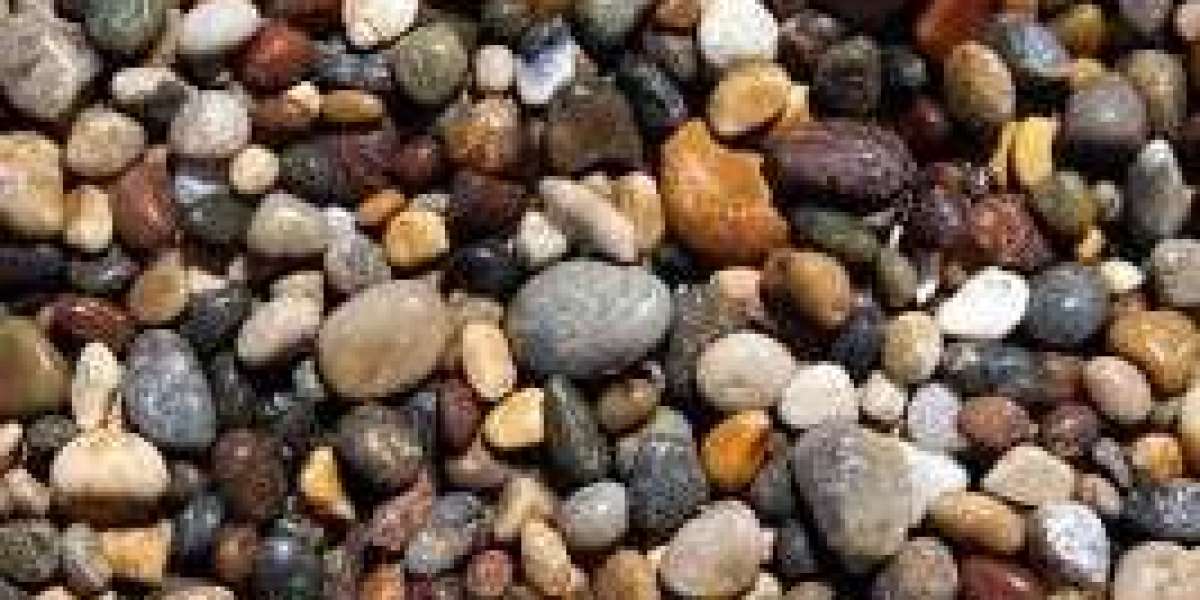Pebblestone: Nature’s Element in Modern Design and Construction
Among the many natural elements used in architecture and landscaping, few are as versatile, timeless, and subtly beautiful as pebblestone. With its smooth texture, organic variation, and earthy colors, pebblestone blends function with aesthetic appeal — finding its place in pathways, water features, facades, and interior accents.
This article explores the origins, characteristics, applications, benefits, and evolving design trends surrounding pebblestone, shedding light on why it continues to be a staple in both traditional and modern design.
1. What is Pebblestone?
1.1 Definition
Pebblestone refers to small, naturally rounded stones (pebbles), typically between 2 mm and 64 mm in diameter, that are used decoratively or functionally in construction, landscaping, and art. When installed together (e.g., embedded in concrete or epoxy), they form surfaces or patterns known as pebblestone finishes.
1.2 Natural Formation
Pebbles form over time through the process of erosion and weathering. As rocks are broken down and transported by rivers, oceans, or glaciers, they become rounded and smoothed — giving them their signature shape and texture.
2. Types of Pebblestone
2.1 By Origin
River Pebbles – Rounded, smooth stones found in riverbeds; often multi-colored.
Beach Pebbles – Found on seashores; may be flatter and salt-weathered.
Tumbled Pebbles – Manually polished stones using tumbling machines for uniform smoothness.
2.2 By Material
Granite Pebbles – Durable and available in a range of speckled colors.
Marble Pebbles – Elegant, often used in high-end interior applications.
Basalt Pebbles – Dark, volcanic stones with a matte finish.
Quartz Pebbles – Translucent or shiny, prized for aesthetic properties.
2.3 By Color
Natural earth tones – Brown, gray, tan, cream
White or black polished – Often used for contrast or minimalist designs
Mixed-color assortments – Popular in mosaic work or mixed surfaces
3. Common Uses of Pebblestone
3.1 Landscaping
Garden paths and walkways
Dry riverbeds for drainage and decoration
Borders around trees or flower beds
Zen gardens or minimalist landscapes
3.2 Architectural Applications
Exterior wall cladding with pebblestone embedded in mortar or mesh
Water features such as fountains or ponds
Pool surroundings for natural traction and beauty
3.3 Interior Design
Shower floors and walls for spa-like appeal
Accent walls and backsplashes
Floor inlays or mosaic art
Countertops with embedded pebblestones in resin or concrete
3.4 Commercial and Public Use
Hotel lobbies and spas
Public parks and walkways
Theme parks or resorts with natural aesthetics
4. Pebblestone Finishes and Installation Methods
4.1 Loose Pebbles
Used as mulch, drainage layers, or filler in landscaping features.
4.2 Embedded in Concrete (Exposed Aggregate)
Pebblestones are mixed into concrete and then the surface is washed to reveal the stones — creating a durable, slip-resistant texture.
4.3 Pebblestone Tile Sheets
Pre-mounted sheets (often mesh-backed) of organized pebbles used for easier installation on vertical and horizontal surfaces.
4.4 Pebble Epoxy Flooring
A mix of pebbles and clear resin laid over a substrate. Durable and attractive, often used in garages, basements, and patios.
5. Benefits of Pebblestone in Design
5.1 Aesthetic Appeal
Organic, calming appearance
Natural variation in color and texture
Enhances connection with nature (biophilic design)
5.2 Durability
Weather-resistant
Long lifespan with minimal maintenance
Ideal for high-traffic outdoor areas
5.3 Sustainability
Naturally sourced (often locally)
No chemicals required for finishing
Permeable surfaces aid in groundwater recharge
5.4 Textural Interest
Provides tactile feedback (used in reflexology paths)
Non-slip surface for wet areas
6. Design Trends Featuring Pebblestone
6.1 Biophilic Architecture
Using natural elements like pebblestone to reduce stress and enhance well-being in interior and exterior spaces.
6.2 Spa and Wellness Spaces
Pebblestone shower floors, saunas, and spa lounges for a tranquil, grounded feel.
6.3 Modern Rustic Aesthetic
Combining raw pebblestone with concrete, wood, or glass for contemporary contrast.
6.4 Monochromatic Minimalism
All-black or all-white pebblestone applications for clean, Zen-inspired designs.
6.5 Eco-Friendly Landscaping
Replacing grass or concrete with pebble beds to reduce water consumption and heat reflection.
7. Maintenance and Care
Regular cleaning with water and mild detergent
Weed prevention using underlayment fabric for landscaping use
Re-sealing epoxy or concrete pebblestone surfaces every few years
Avoiding harsh chemicals that can stain or degrade natural stone
8. Limitations and Considerations
Comfort: Not always barefoot-friendly unless polished and properly installed
Cost: Higher-end stones (e.g., marble pebbles) can be expensive
Installation: Time-consuming and labor-intensive in some applications
Slipperiness: Can be slick when wet unless sealed properly
Conclusion
Pebblestone is a testament to how simple natural elements can elevate design, adding both function and beauty to a space. Whether used for practical landscaping or artistic accents, it blends effortlessly with a wide range of styles — from rustic outdoor spaces to modern minimalist interiors.
With growing trends in sustainability and biophilic design, the use of pebblestone is likely to increase, offering timeless charm and natural elegance for years to come.
Further Reading and Resources
Natural Stone Institute – Guidelines for Stone Use
Landscape Architecture Magazine – Material Trends
Houzz & Pinterest – Search: “Pebblestone design ideas”
DIY Pebble Path Installation Guides – YouTube & Home Depot













